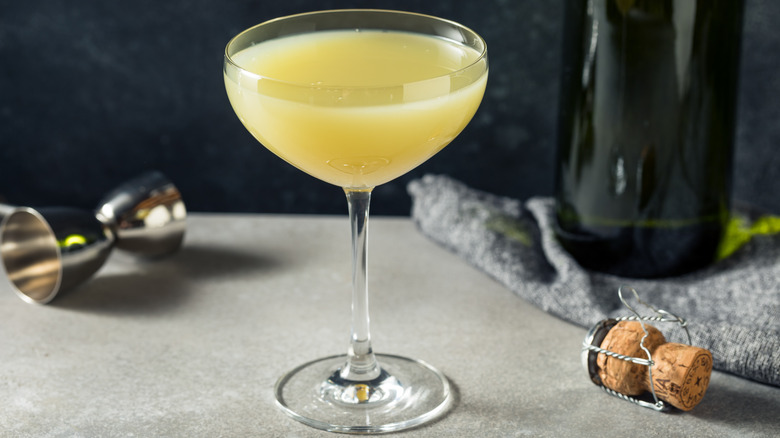You Shouldn't Follow Ernest Hemingway's Death In The Afternoon Advice
Drinking was a hallmark of the literati of the 1920s. This group of some of the best and brightest in the canon of literature definitely had a penchant for alcohol. Known as the "Lost Generation," so aptly coined by Gertrude Stein, usurped by Ernest Hemingway, per Britannica, and made famous in his novel, "The Sun Also Rises," this term became the moniker of these post-World War I writers coping with what they perceived as the futility of life, and drinking to get through it.
Paste Magazine notes if you've ever observed the number of bottles of Fundador, beer, wine, cognac, and martinis Hemingway has his characters drink in "The Sun Also Rises," you would realize "it's enough to euthanize an elephant." That might sound like hyperbole, but a blogger at Praeterita did the homework for us, creating a list of the booze imbibed by chapter, and it's a lot.
Was Hemingway a big drinker? According to Men's Journal, while the writer rarely mixed drinking and writing, he enjoyed scotch and soda, martinis, negronis, whiskey, daiquiris, and so on. Today, there are plenty of drinks associated with this master of the word, including the brunch favorite Champagne-based Bellini that is said to have been invented at Harry's Bar in Venice, per ABC Fine Wine & Spirits. And then there's his Death in the Afternoon. But before you pull out the jigger to make this one, you might want to rethink the recipe.
Change the ratios
According to the Robb Report, Hemingway's cocktail, Death in the Afternoon, named for his book about the traditions of bullfighting, is a powerful mixture of absinthe and Champagne. His recipe for this concoction was also a contribution to a book of 30 cocktails titled "So Red the Nose, or Breath in the Afternoon," and received top billing, being featured on page one. But what the Robb Report takes issue with is the amount of absinthe the drink calls for. Hemingway wrote, "Pour 1 jigger of absinthe into a Champagne glass." The Robb Report notes this has to be a joke because that's two ounces of rather potent alcohol. Hemingway then instructs, "Add iced Champagne until it attains the proper opalescent milkiness. Drink three to five of these slowly."
Per Original Absinthe, absinthe was made from wormwood, known as "The Green Fairy," and had its drinkers tripping mentally and emotionally. In its original form, it was ultimately banned in the U.S. Today, we have what is known as "American Absinthe," which must be free of the toxic thujone. But when Hemingway created his Death in the Afternoon, the absinthe was not of the American variety. Still, the Robb Report notes that Hemingway's cocktail is not without its merits and suggests "flipping the ratios" of the two ingredients, which will still allow you to enjoy the anise flavor of the absinthe paired with your favorite bubbly.

